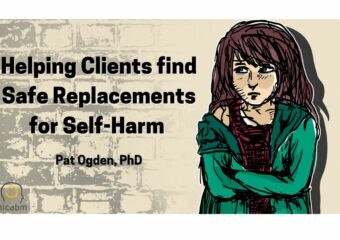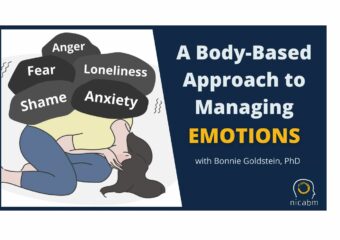In the aftermath of trauma, some clients turn to self-harm to relieve intense feelings of shame, anxiety, or even emotional numbness. Over time, these harmful behaviors can become addictive – and helping clients break that cycle can be a challenging process. So in the video below, Pat Ogden, PhD explains how she helps clients gain […]
A Body-Based Approach to Managing Difficult Emotions
When clients have a low threshold for tolerating difficult emotions, their lives can become extremely limited. Instead of working through the challenges that can lead to new opportunities, they may choose to stay with the relative “safety” of what they know – even if it’s dysfunctional. So in the video below, Bonnie Goldstein, PhD, walks […]
Questions That Can Help Your Clients Talk About Shame
Talking about shame can be a deeply uncomfortable experience . . . . . . and clients may go to great lengths to avoid discussing or admitting to feelings of shame. But as we know, shame that stays hidden will continue to grow more powerful, often bringing on even more shame. So in the video […]
An Exercise to Challenge Self-Doubt
When a client suffers from impostor syndrome, they can get locked in a cycle of questioning their abilities and downplaying their achievements. And instead of recognizing their success and building confidence to pursue their goals, they may shy away from opportunities and live in fear of being “found out.” So in the video below, Kelly […]
Treating Trauma: How to Work with the Shame of Moral Injury
When a client experiences a moral injury, the guilt, sadness, and shame that come with it can be debilitating. It can create a deep wound at the center of a person’s identity. So how can you help a client who’s suffering from a moral injury begin to heal? In the video below, Ruth Lanius, MD, […]




